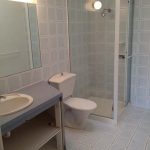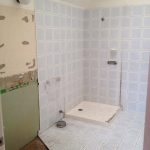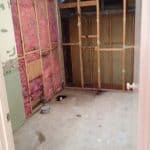If you’re reading this, you’re likely considering undertaking a bathroom or kitchen strip out, but don’t know where to start, or perhaps have some concerns or questions surrounding this process…but don’t worry, we’re here to help!
What is a strip out?
A strip out is a form of demolition that involves the removal of non-structural components of a room or building, so that it can be repurposed. Most small scale internal renovations of this nature do not need a building permit, and homeowners can undertake this process themselves, however, you may wish to engage a project management company to help you plan your renovation and organise the many trades involved.
A kitchen strip out can involve the removal of non-structural walls, cupboards, benchtops, flooring and splashback tiles and/or sinks and fittings. A bathroom strip out, on the other hand, can involve the removal of floor and wall tiles, shower screens, baths, spas, toilets, taps and fittings, mirrors and more.
Have a plan
As with most things, the first step is to have a good plan in place for your renovation. What do you want to remove and what are you going to replace it with, will you change the layout of fixtures and fittings? Large changes to layout will cost more in trades, but keeping your layout the same will save in plumbing and electrical.
You must consider what your budget for the renovation will be, the strip out will present a very small part of this cost, also consider how long will your kitchen or bathroom be out of use.
Clear the work area
Before the demolition and renovation work can commence, you will need to remove all furniture, empty cabinets, and clear all unnecessary objects from access areas to allow workers to come and go with all the materials to be stripped out and then new materials to be replaced.
Turn off water, electricity and gas
To protect yourself and others against flooding and spills as well as electrocution and gas leaks, ensure that water, electricity and gas are switched off prior to the strip out commencing. A professional electrician and plumber will be required to perform these tasks.
Waste management
Demolition will generate waste and dust that must be appropriately managed. Some materials can be reused or recycled. Other materials will need to be sent to landfill or have a skip bin on-site to put these materials into.
All Stripped provides a full service to strip out all items, recycle where possible, minimise and remove all dust and leave your home clean.
A consideration for strip outs in older buildings
Older buildings pre 1980 may contain asbestos, in the form of fibre cement sheeting on the walls especially behind wet areas, shower, bath and kitchen splashback. It may also be in tile underlay on the floor or vinyl on the floor.
You cannot tell if a building material contains asbestos just by looking at it. This means that if you suspect it may be asbestos, you must treat it like it is. In some cases, you may be able to safely remove a small piece, place it in a sealed bag and take it to a local asbestos testing centre. In some cases, you may wish to engage a licenced asbestos assessor, and if asbestos is found, a licenced asbestos removalist must safely remove it from the premises.
How we can help
Having removed more than 320,000 square metres of tiles and another 472,000 square metres combined of timber, cork, vinyl, carpet, and other surfaces, plus stripping more than 7,650 bathrooms and kitchens – you can rest assured that All Stripped have the experience needed to deal with all possible situations, safely, efficiently and dust fee.
Contact us today to request a quote or for any enquiries that you may have!

Pre Bathroom Strip Out

Bathroom Strip Out (Half Way Point).

Bathroom Strip Out Completed
Read more on our other blogs: